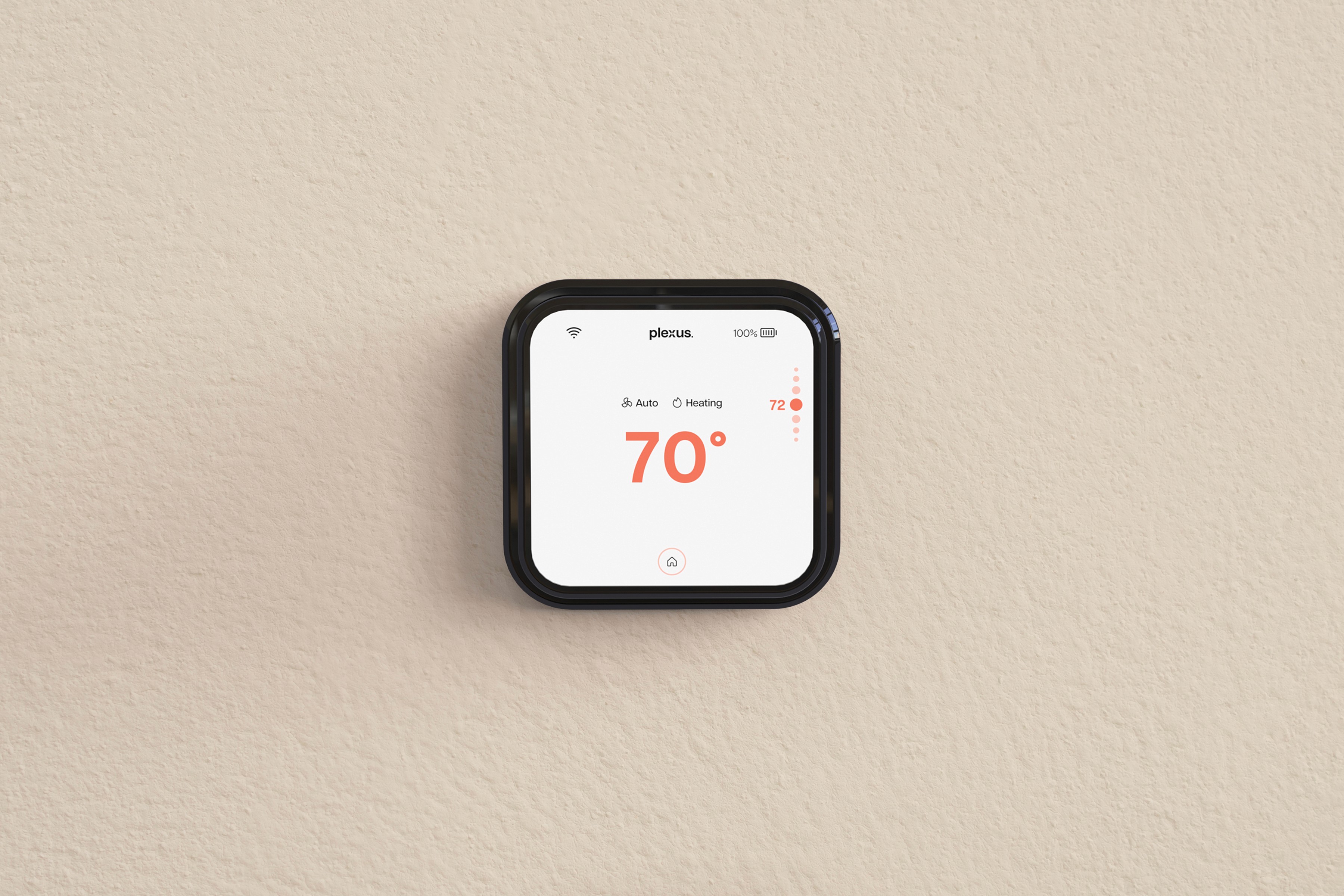
Plexus is revolutionizing how homeowners understand and interact with their HVAC unit and home. By integrating sensors in the Plexus HVAC system in conjunction with our smart thermostat, Plexus allows for true connection between homeowners, technicians, and HVAC systems, saving time and reducing costs for everyone.
As project manager, I delegated tasks among our team and guided the overall project vision and outcome. I also facilitated user interviews and testing, assisted our UI designer, and designed the branding and packaging.
Plexus is revolutionizing how homeowners understand and interact with their HVAC unit and home. By integrating sensors in the Plexus HVAC system in conjunction with our smart thermostat, Plexus allows for true connection between homeowners, technicians, and HVAC systems, saving time and reducing costs for everyone.
As project manager, I delegated tasks among our team and guided the overall project vision and outcome. I also facilitated user interviews and testing, assisted our UI designer, and designed the branding and packaging.
Plexus is revolutionizing how homeowners understand and interact with their HVAC unit and home. By integrating sensors in the Plexus HVAC system in conjunction with our smart thermostat, Plexus allows for true connection between homeowners, technicians, and HVAC systems, saving time and reducing costs for everyone.
As project manager, I delegated tasks among our team and guided the overall project vision and outcome. I also facilitated user interviews and testing, assisted our UI designer, and designed the branding and packaging.
Maintaining your home can be demanding
Nearly every homeowner has come in contact with an HVAC system, however, their knowledge and confidence using the system is restricted. HVAC systems require yearly maintenance, resulting in over 14 billion dollars spent annually on HVAC repairs in the United States (Service Business Evolution).
Home visits for technicians to repair these issues are standard in the industry, but oftentimes the problem is not diagnosed yet and technicians arrive without needed materials. The lack of HVAC diagnostics from the homeowner results in service call-backs, financial loss for both parties, and customer dissatisfaction.
As the HVAC industry grows and advances, middle-aged homeowners are in need of a new system that is more efficient, intuitive, and understandable.
Maintaining your home can be demanding
Nearly every homeowner has come in contact with an HVAC system, however, their knowledge and confidence using the system is restricted. HVAC systems require yearly maintenance, resulting in over 14 billion dollars spent annually on HVAC repairs in the United States (Service Business Evolution).
Home visits for technicians to repair these issues are standard in the industry, but oftentimes the problem is not diagnosed yet and technicians arrive without needed materials. The lack of HVAC diagnostics from the homeowner results in service call-backs, financial loss for both parties, and customer dissatisfaction.
As the HVAC industry grows and advances, middle-aged homeowners are in need of a new system that is more efficient, intuitive, and understandable.
Maintaining your home can be demanding
Nearly every homeowner has come in contact with an HVAC system, however, their knowledge and confidence using the system is restricted. HVAC systems require yearly maintenance, resulting in over 14 billion dollars spent annually on HVAC repairs in the United States (Service Business Evolution).
Home visits for technicians to repair these issues are standard in the industry, but oftentimes the problem is not diagnosed yet and technicians arrive without needed materials. The lack of HVAC diagnostics from the homeowner results in service call-backs, financial loss for both parties, and customer dissatisfaction.
As the HVAC industry grows and advances, middle-aged homeowners are in need of a new system that is more efficient, intuitive, and understandable.
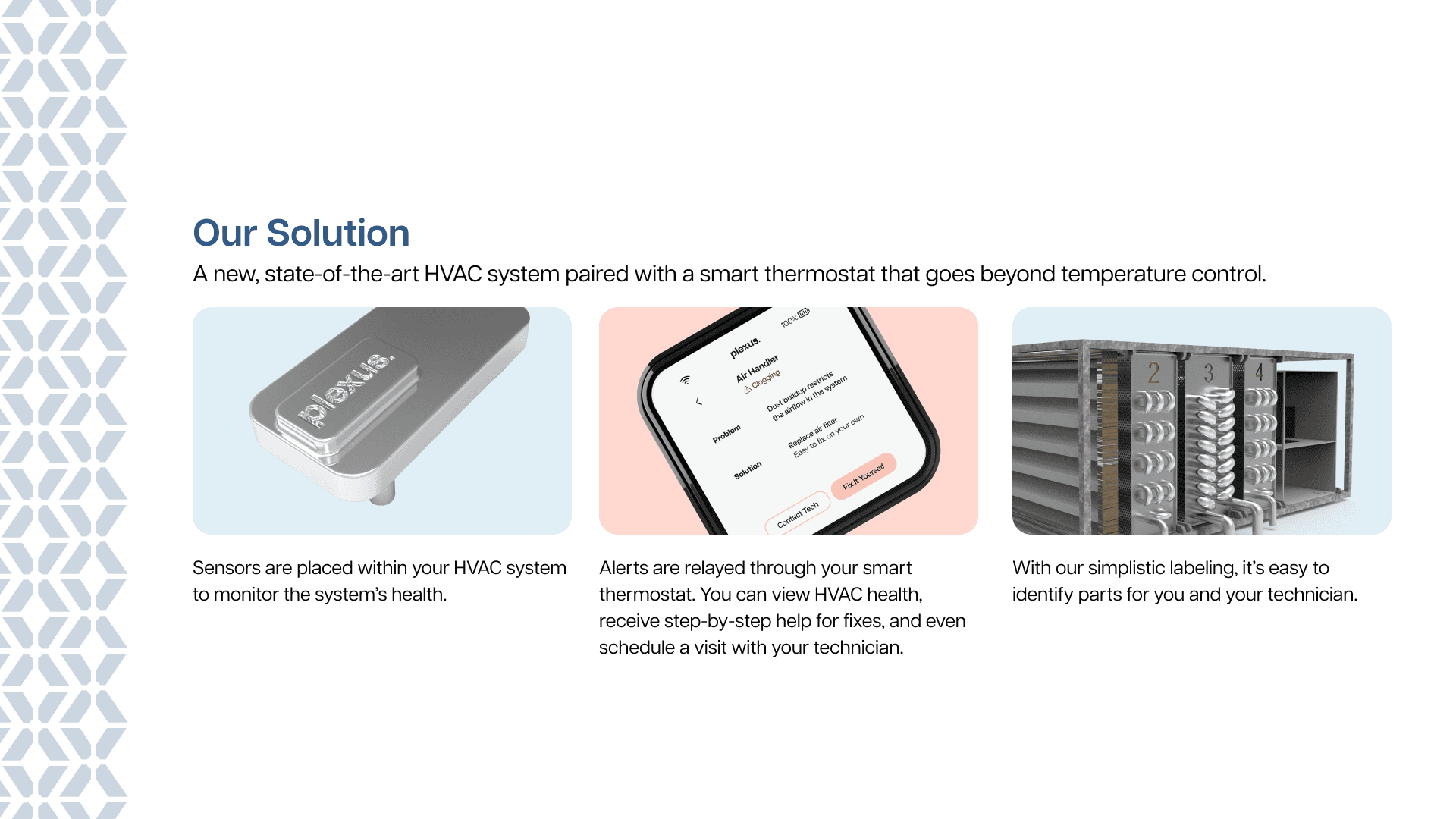
Understanding the market
In our team, only one of us is a homeowner and we're all unfamiliar with HVAC (heating, ventilation, and air conditioning) systems. We needed to understand HVAC and its market, so we delved into research.
We learned in 2022 the global HVAC market attained a value of nearly 159 billion dollars (Service Business Evolution). Furthermore, it’s estimated the global HVAC market will grow to 227 billion by 2028.
Understanding the market
In our team, only one of us is a homeowner and we're all unfamiliar with HVAC (heating, ventilation, and air conditioning) systems. We needed to understand HVAC and its market, so we delved into research.
We learned in 2022 the global HVAC market attained a value of nearly 159 billion dollars (Service Business Evolution). Furthermore, it’s estimated the global HVAC market will grow to 227 billion by 2028.
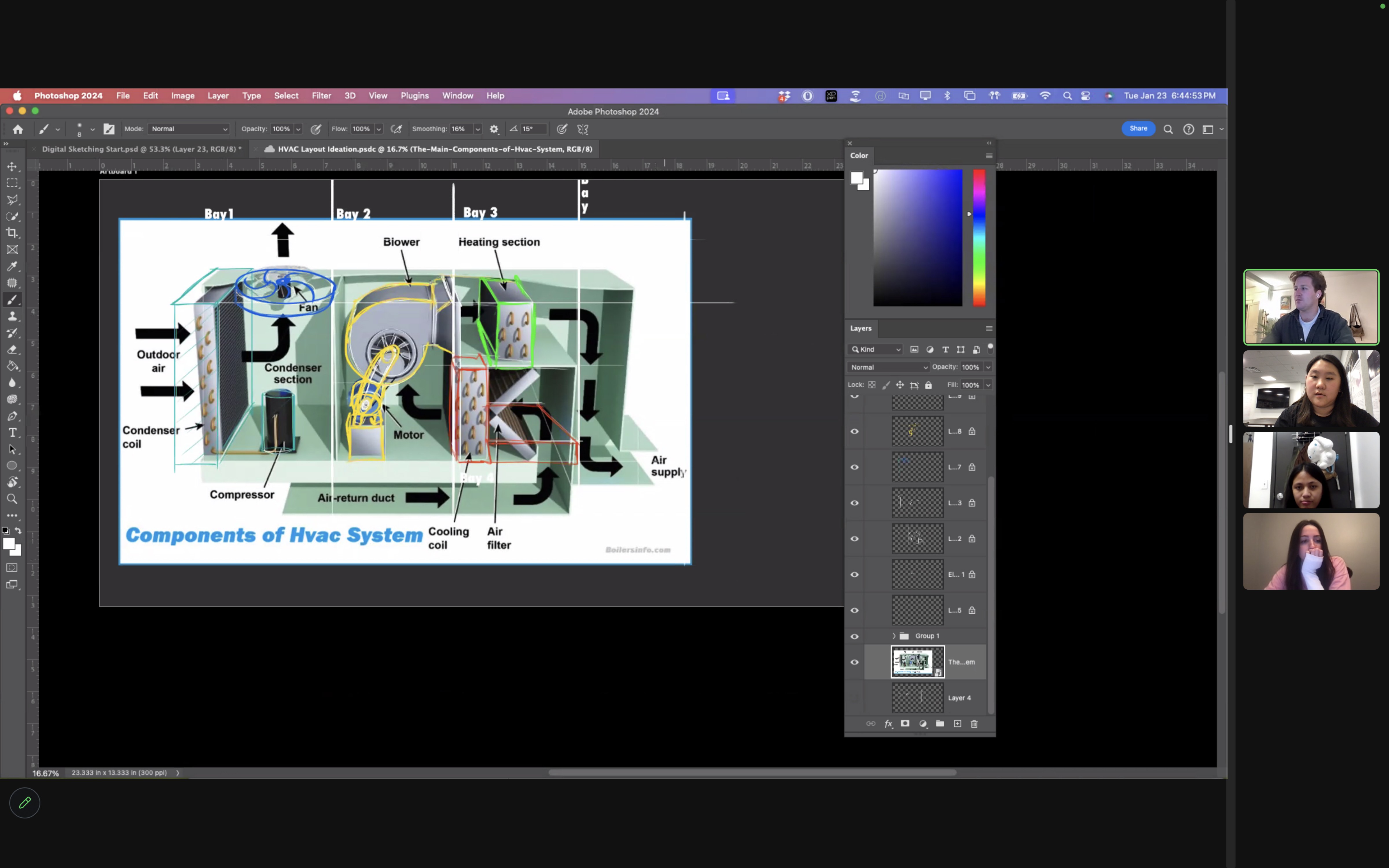


Understanding our users
We talked to eight 45+ year old homeowners and two HVAC technicians/engineers, and asked them about their experiences with repairing HVAC systems. From this we were able to identify three different opportunity areas:
Safety factors into comfortability
Unexperienced homeowners felt unsafe performing some repairs and still wanted professional help.
Automate the process
Homeowners wanted something that will self-diagnose problems and contact the technician for them.
Callbacks = major loss
Callbacks (not having the proper parts to fix an issue) can cause financial loss for both the homeowner and technician. Besides designing a new HVAC experience for homeowners, we can also focus on the relationship between them and their technician.
Understanding our users
We talked to eight 45+ year old homeowners and two HVAC technicians/engineers, and asked them about their experiences with repairing HVAC systems. From this we were able to identify three different opportunity areas:
Safety factors into comfortability
Unexperienced homeowners felt unsafe performing some repairs and still wanted professional help.
Automate the process
Homeowners wanted something that will self-diagnose problems and contact the technician for them.
Callbacks = major loss
Callbacks (not having the proper parts to fix an issue) can cause financial loss for both the homeowner and technician. Besides designing a new HVAC experience for homeowners, we can also focus on the relationship between them and their technician.



Narrowing down our target audience
We want to create a beneficial solution that would save time and money for both homeowners and technicians. Taking all of our research into account, we decided to focus on 45–60 year old homeowners buying/building a new home or looking to install a new, state-of-the-art HVAC system, as well as their technicians.
Narrowing down our target audience
We want to create a beneficial solution that would save time and money for both homeowners and technicians. Taking all of our research into account, we decided to focus on 45–60 year old homeowners buying/building a new home or looking to install a new, state-of-the-art HVAC system, as well as their technicians.
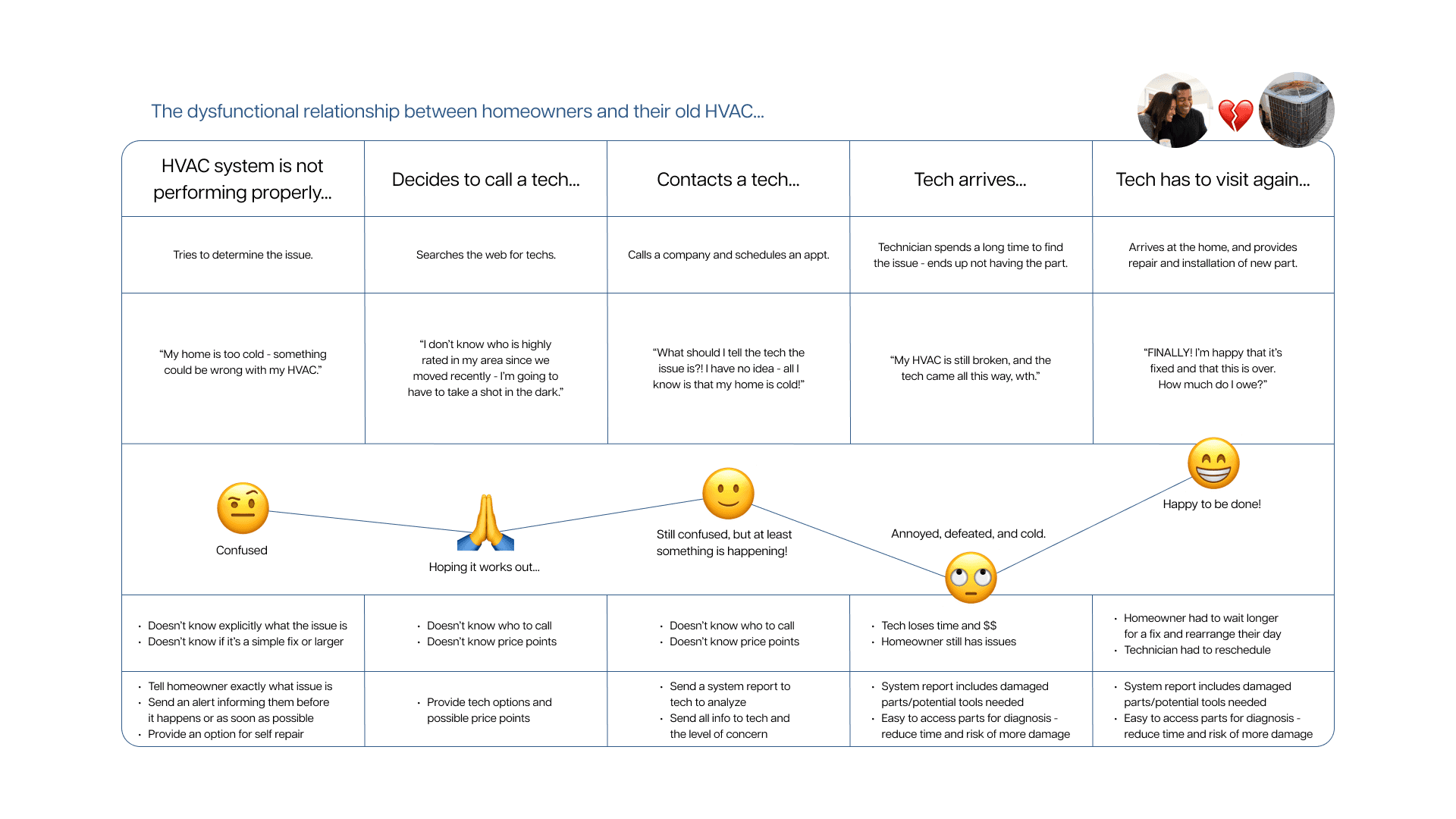


Where do we fall?
Like our competitors such as Google Nest and Ecobee, we wanted to go for a modern and clean aesthetic.
What sets Plexus apart is we're creating a new understanding and connections between homeowners and their HVAC, giving them more control over their home maintenance.
Where do we fall?
Like our competitors such as Google Nest and Ecobee, we wanted to go for a modern and clean aesthetic.
What sets Plexus apart is we're creating a new understanding and connections between homeowners and their HVAC, giving them more control over their home maintenance.



Simplifying our idea into an user flow
We developed a user flow to visualize the steps homeowners would take while using Plexus. This helped us to see what features we should prioritize based on how the user would interact with the thermostat.
Simplifying our idea into an user flow
We developed a user flow to visualize the steps homeowners would take while using Plexus. This helped us to see what features we should prioritize based on how the user would interact with the thermostat.
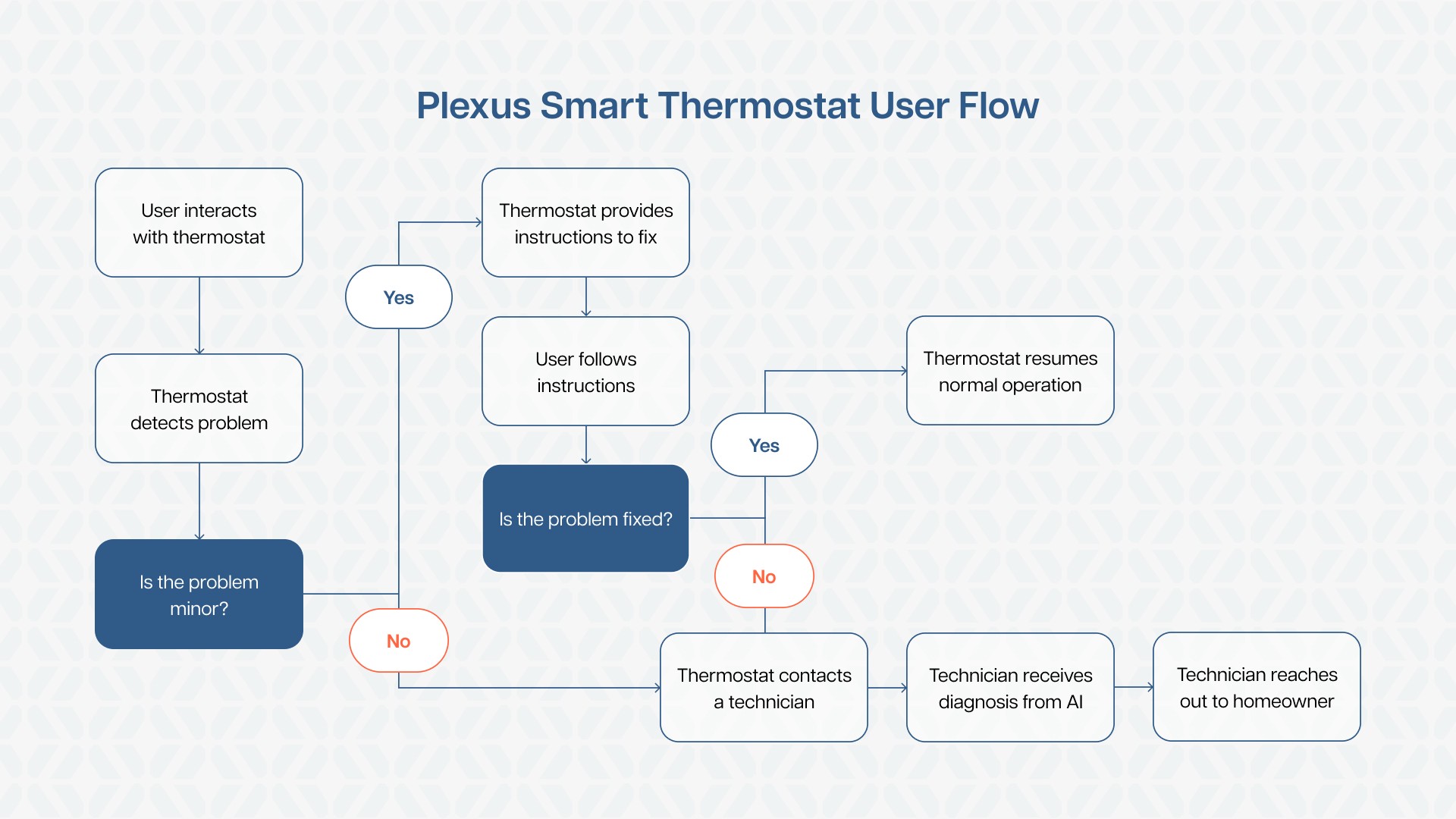


Visualizing our concept
When first bringing Plexus to life, we created two different variations of the thermostat prototype and played around with different layouts, interactions, and product shape.
Due to time constraints and the complexity of redesigning an entire HVAC system, we focused on designing an air handler with a new labelling system to make it easier to identify parts, as a representation of what could be done to the entire system. Inside the air handler there are built-in sensors that collect data and relay it to the smart thermostat.
Visualizing our concept
When first bringing Plexus to life, we created two different variations of the thermostat prototype and played around with different layouts, interactions, and product shape.
Due to time constraints and the complexity of redesigning an entire HVAC system, we focused on designing an air handler with a new labelling system to make it easier to identify parts, as a representation of what could be done to the entire system. Inside the air handler there are built-in sensors that collect data and relay it to the smart thermostat.
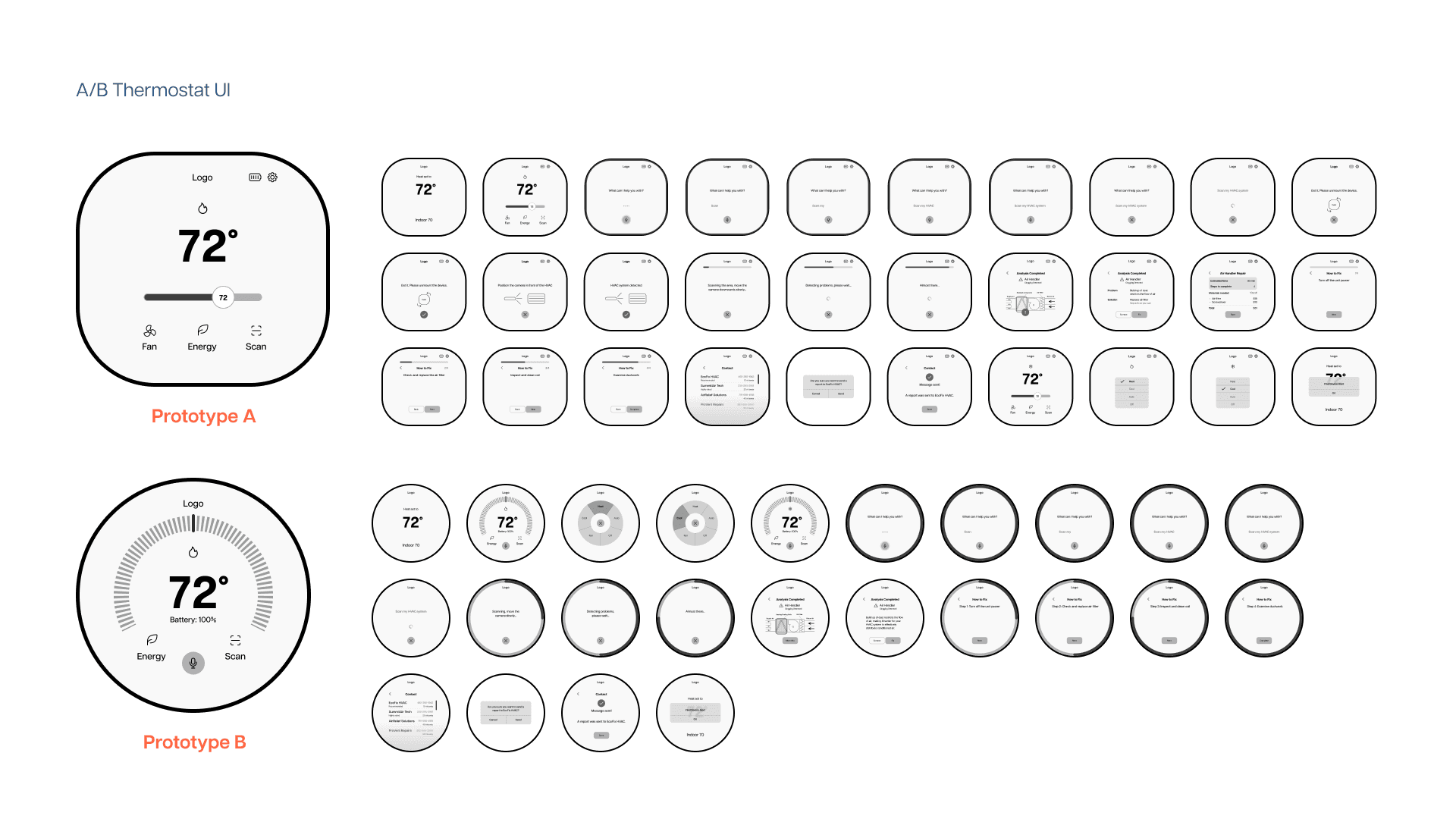


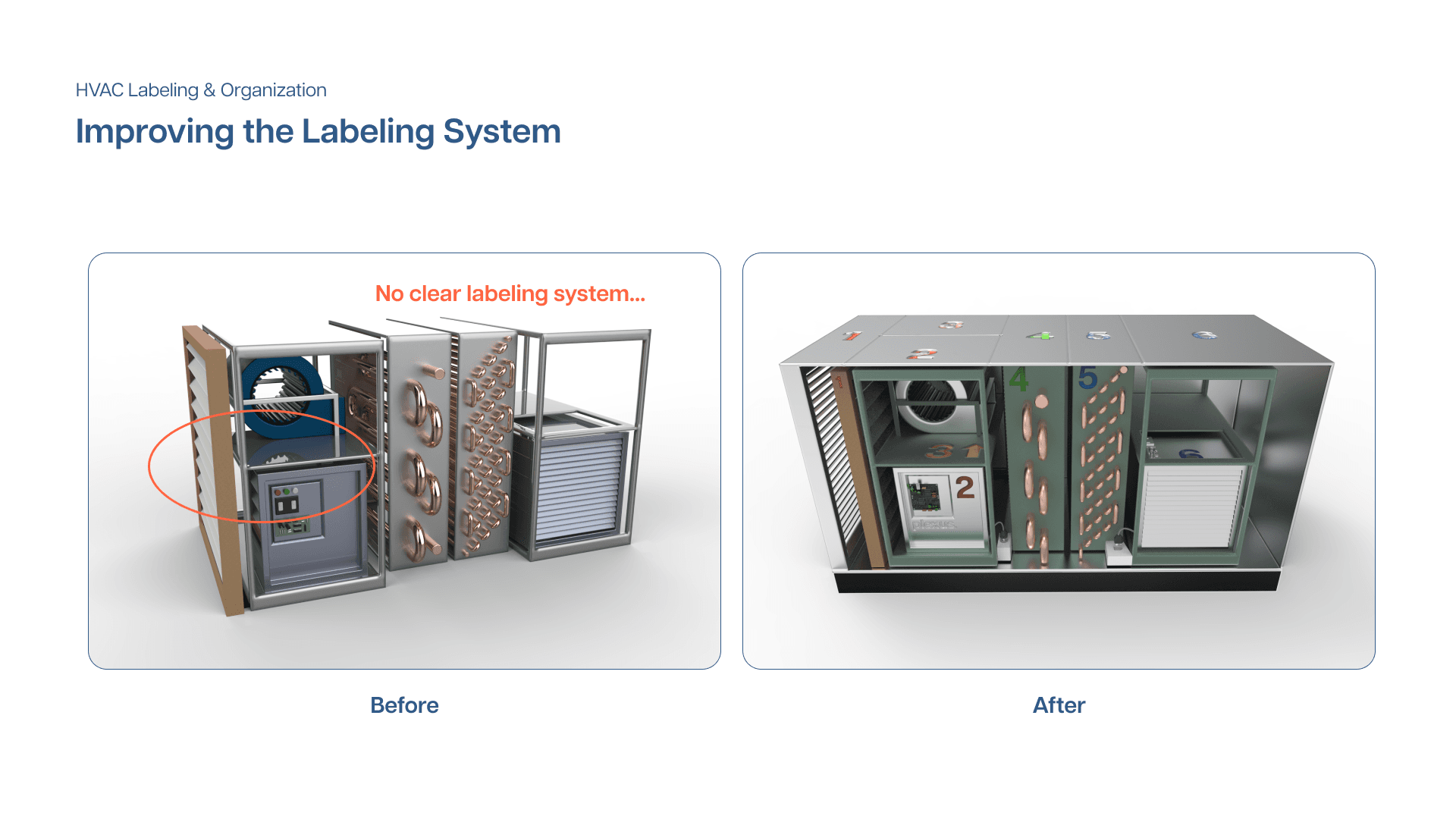


Testing our design
We tested seven different homeowners and conducted three rounds of testing utilizing A/B testing, card sorting, and usability testing.
From our multiple rounds, we were able to make continuous iterations to our user flow, information architecture, and thermostat interface based off the user input given.
Testing our design
We tested seven different homeowners and conducted three rounds of testing utilizing A/B testing, card sorting, and usability testing.
From our multiple rounds, we were able to make continuous iterations to our user flow, information architecture, and thermostat interface based off the user input given.
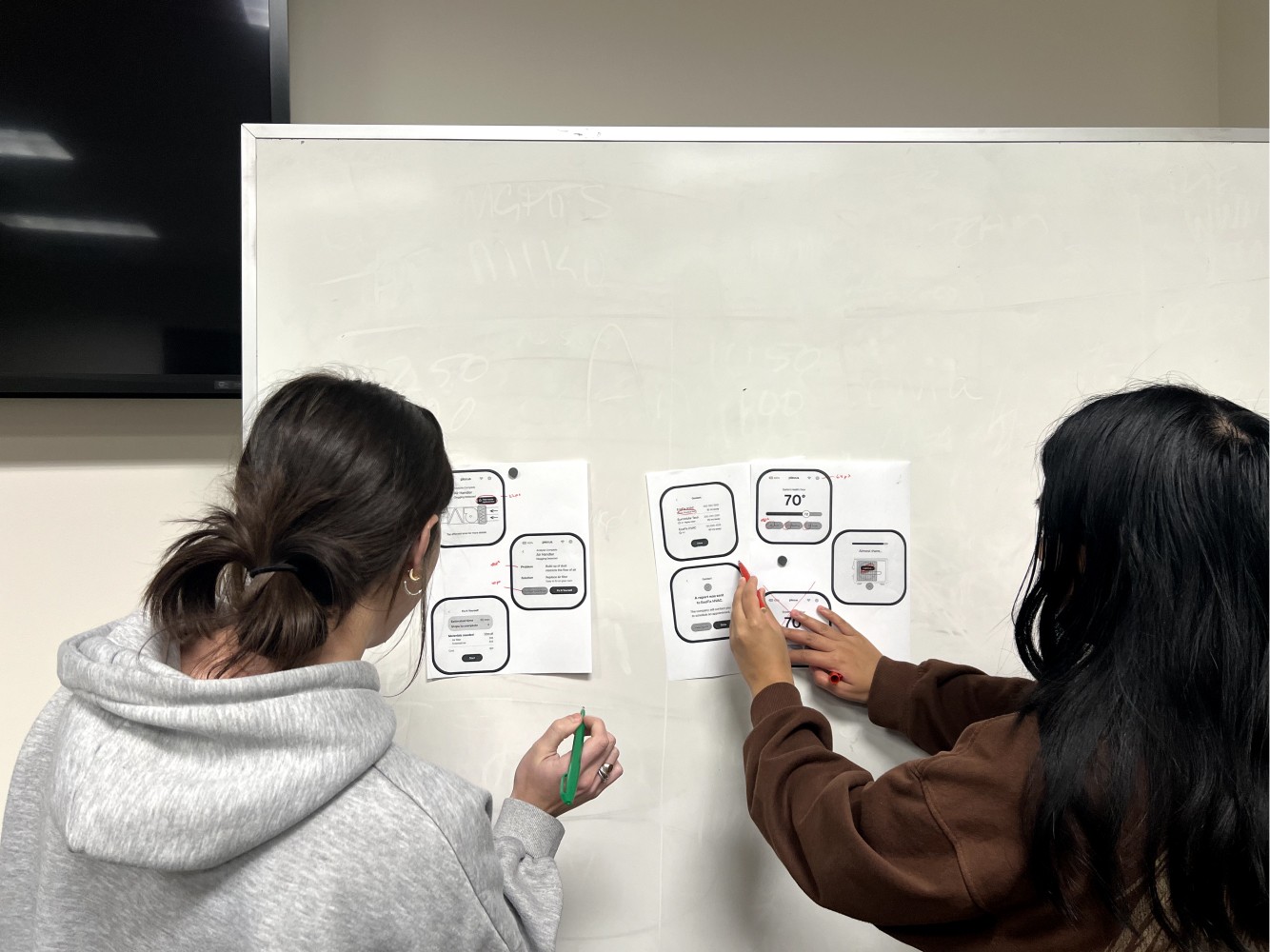


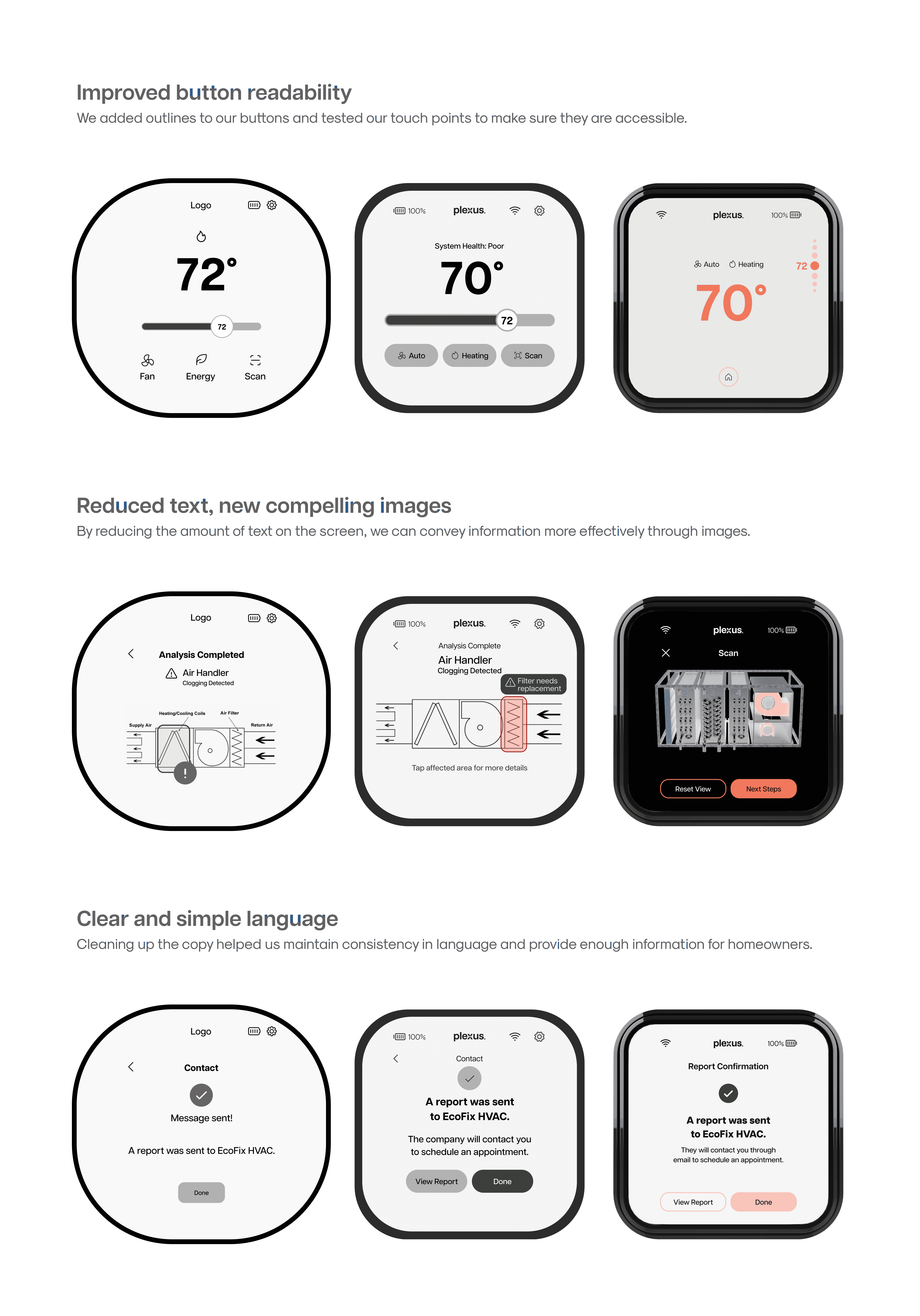


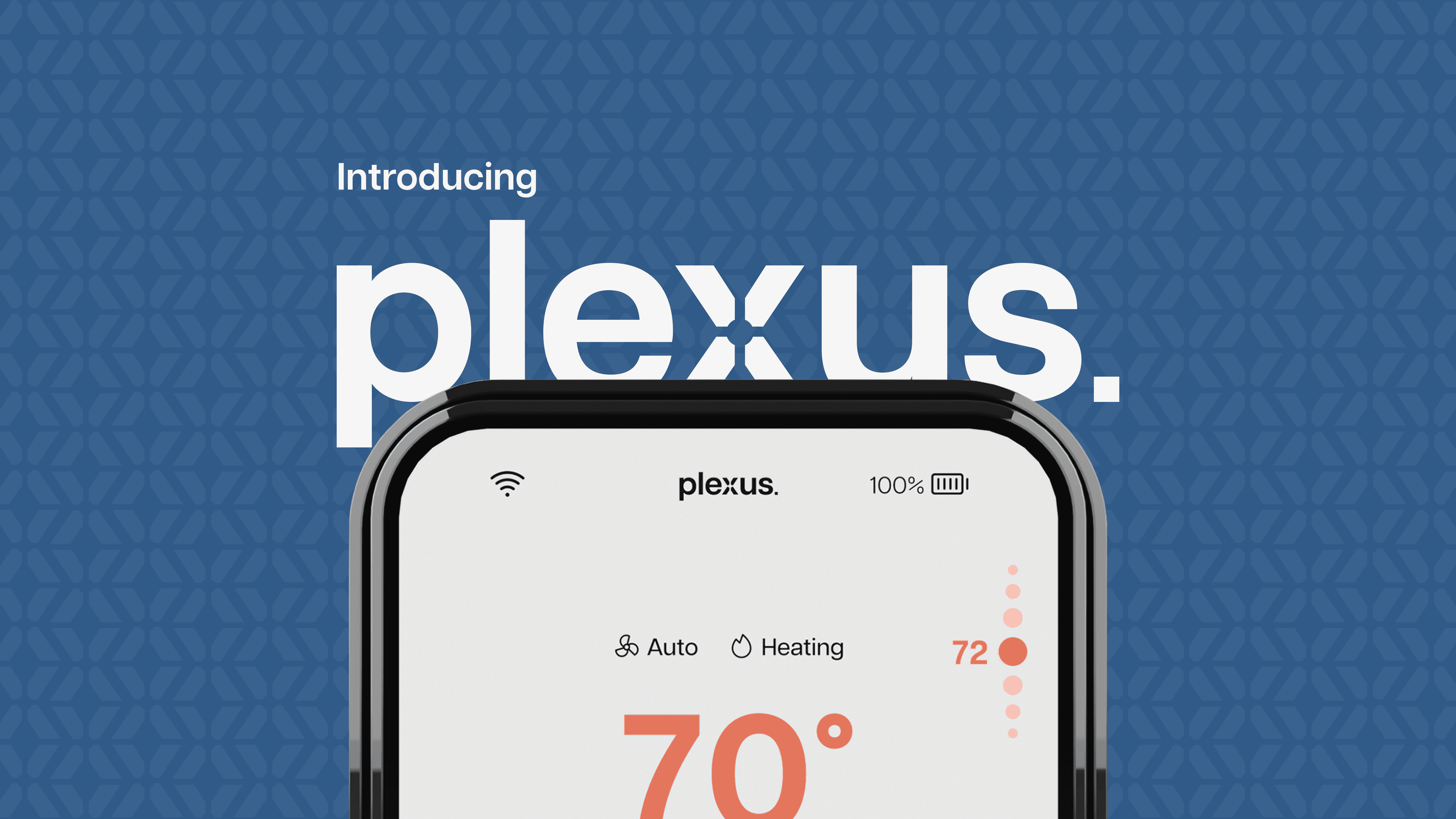
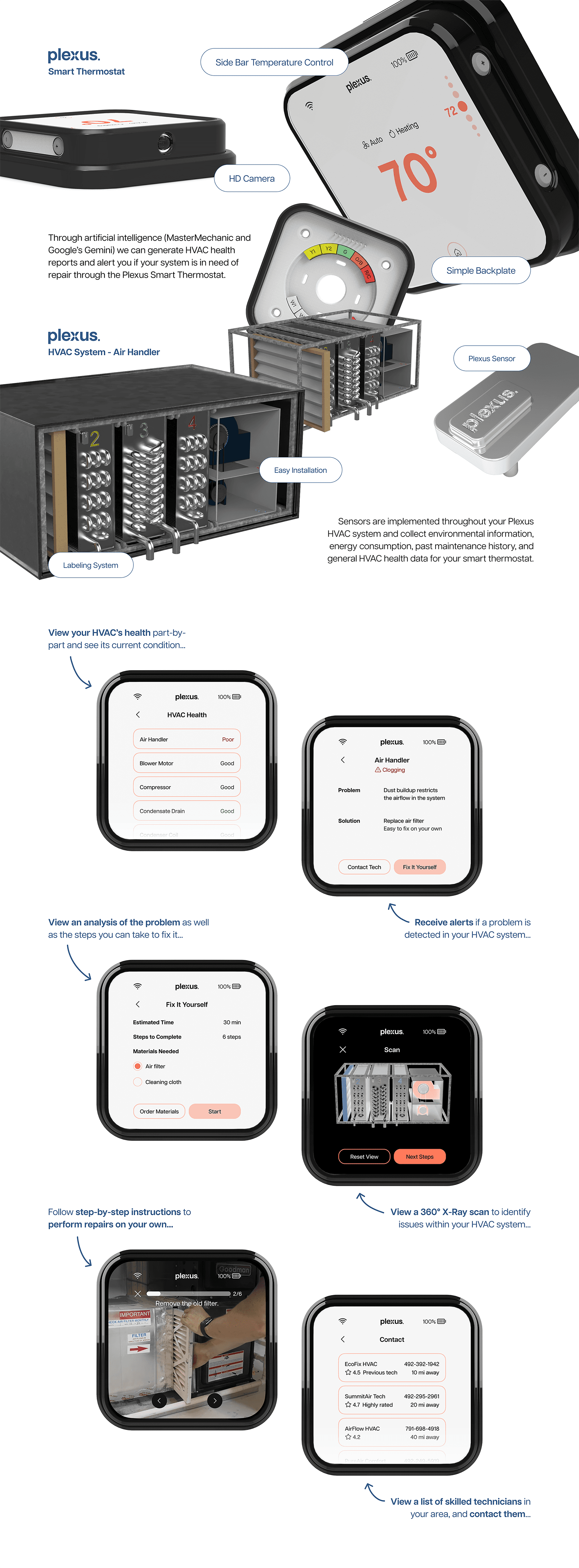



Final Takeaways
Storytelling creates connection
At first it was difficult creating a connection with our audience during pitches due to the mystery that is HVAC. By utilizing storytelling and relating our audience to our problem, we were able to create understanding!
Shoot high, then refine
As a team, we chose home maintenance as a direction and landed on HVAC. But when trying to ideate solutions for our problem, we were coming up blank. When we starting shooting for seemingly impossible ideas and finding how to make them a reality, we hit our sweet spot.
Anything can be fun!
HVAC might not seem like it could be fun, but this project was a blast! We were able to dive into unfamiliar territory and create something truly revolutionary.
Final Takeaways
Storytelling creates connection
At first it was difficult creating a connection with our audience during pitches due to the mystery that is HVAC. By utilizing storytelling and relating our audience to our problem, we were able to create understanding!
Shoot high, then refine
As a team, we chose home maintenance as a direction and landed on HVAC. But when trying to ideate solutions for our problem, we were coming up blank. When we starting shooting for seemingly impossible ideas and finding how to make them a reality, we hit our sweet spot.
Anything can be fun!
HVAC might not seem like it could be fun, but this project was a blast! We were able to dive into unfamiliar territory and create something truly revolutionary.